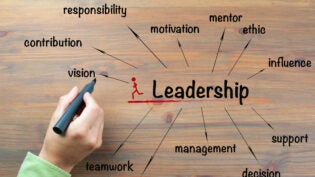
Unfortunately, as a person ages, you might be subjected to unfounded biases and misconceptions. This notion is becoming increasingly apparent in the workforce, with employers and colleagues alike displaying both unconscious and conscious age bias.
In the modern workforce, ageism presents itself in a variety of factors. Offhanded comments can be made about a lack of computer skills. Older people can be replaced by younger, less expensive employees. Language present in job ads can be inherently ageist.
With life expectancy rates only increasing and various studies debunking common age-related theories, managing ageism in the workforce is more important than ever. Otherwise, businesses will lose workers who still have plenty left to offer their employer.
While combating certain biases is not an easy task, ageism in the workforce can be managed. Everyone from managers to employees simply needs to be educated and held accountable. Only then can common age misconceptions be a thing of the past.
The benefits of older workers
Older workers bring a high level of experience and expertise to an organisation. However, an advanced skill set isn’t the only benefit. In fact, older workers can positively benefit almost every single facet of business operations.
As previously mentioned, an older worker is experienced. This experience can be passed on to other workers in the company. In fact, a survey conducted by Australian Seniors even found that 94% of millennials believed that seniors have a lot of wisdom to share.
An advanced worker is also inherently loyal. This substantially reduces a company’s monetary and resource expenditure. Additionally, older workers can understand and connect with different market segments, giving your company a wider audience reach.
Common ageist misconceptions
Common ageist stereotypes centre around older workers being: unable to handle job demands, too hard to manage, too costly (in terms of salary and benefits) and too risky due to things like developing illnesses at higher rates.
With these misconceptions in mind, it’s not hard to understand why ageism is widely regarded as the most experienced form of workplace discrimination. This is particularly harrowing for two key reasons. Firstly, workers should always feel safe and valued. Secondly, this type of discrimination is often based on facts that are unfounded.
In fact, ageing should no longer be considered a disadvantage. Especially when you consider the evidence that the brain’s ability to retain knowledge and display expertise- among other things- only increases as we age.
4 ways to combat ageism in the workplace
Combating ageism may feel like an uphill battle, especially since this type of discrimination often occurs subconsciously. However, with a few simple policy and strategy changes, your workplace can become a safe environment where every employee feels valued.
-
Objectively review hiring policies
Hiring practices can be inherently ageist. Using words like young minds and digitally savvy, businesses are subconsciously discriminating against and driving away workers of a certain age. By reviewing hiring practices you can eliminate discriminatory language and emphasise the skills you want, not the person you want.
-
Provide discrimintation and diversity training
Team building between generations can be tricky. There can be a lack of respect and displays of subconscious bias. To avoid these scenarios, provide discrimination and diversity training. This way employees actively understand what is expected of them and, the right and wrong ways to speak to people with different generational backgrounds.
-
Implement mentoring programs
For older individuals, work provides an opportunity to give value to others. However, ageism often contributes to older workers feeling unvalued. To combat this, workplaces should encourage mentoring programs. These programs provide a platform for older workers to share skills and knowledge, all the while connecting with younger employees.
-
Create new rewards schemes
In the modern workforce, younger workers who are performing to a high standard are rewarded with extra training opportunities. Whereas older workers are not treated to the same courtesy. Instead of contributing to ageist bias that suggests older workers don’t want extra training, offer older workers the same courtesy as their younger counterparts.
Creating a more equal workplace
A modern business faces many challenges. With internal and external pressures mounting, allowing ageism to divide a workplace seems like a waste of resources. This is especially true when you consider the benefits an older worker brings to an organisation.
Rather than letting ageism divide your workforce, take active steps to combat this discrimination. This way, each employee is given the tools necessary for them to work effectively and efficiently.
By reviewing hiring and operating practices and developing business specific mentor programs, the gap between the different generations present in your workplace decreases. Allowing for a more cohesive team unit.
The idea of looking inward and changing inherently discriminatory practices and behaviours can seem like a task too big to manage. However, taking the time to make the workplace more inclusive and respectful of older workers will only benefit the organisation.
1966 Views













